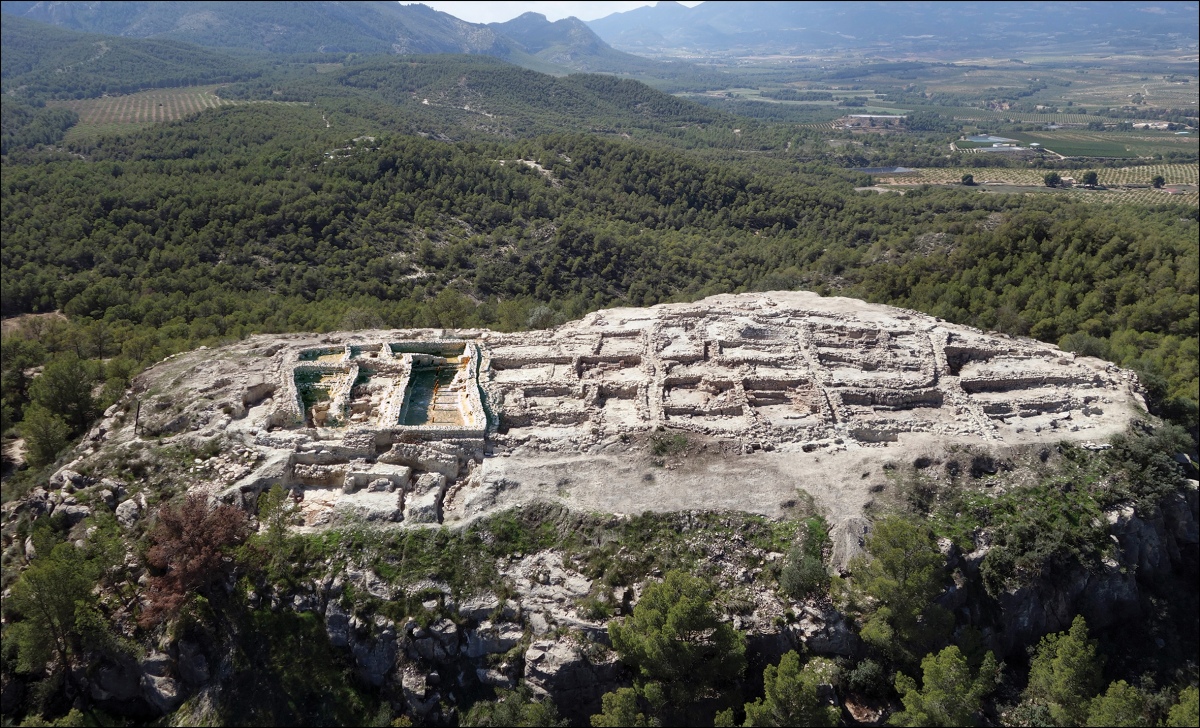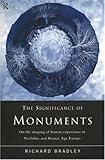<< Other Photo Pages >> Alto de Almoloya - Castro or Chafurdão in Spain in Murcia
Submitted by DavidMorgan on Thursday, 11 March 2021 Page Views: 2650
Multi-periodSite Name: Alto de AlmoloyaCountry: Spain
NOTE: This site is 34.937 km away from the location you searched for.
Region: Murcia Type: Castro or Chafurdão
Nearest Town: Murcia Nearest Village: Pliego
Latitude: 37.952738N Longitude: 1.507883W
Condition:
| 5 | Perfect |
| 4 | Almost Perfect |
| 3 | Reasonable but with some damage |
| 2 | Ruined but still recognisable as an ancient site |
| 1 | Pretty much destroyed, possibly visible as crop marks |
| 0 | No data. |
| -1 | Completely destroyed |
| 5 | Superb |
| 4 | Good |
| 3 | Ordinary |
| 2 | Not Good |
| 1 | Awful |
| 0 | No data. |
| 5 | Can be driven to, probably with disabled access |
| 4 | Short walk on a footpath |
| 3 | Requiring a bit more of a walk |
| 2 | A long walk |
| 1 | In the middle of nowhere, a nightmare to find |
| 0 | No data. |
| 5 | co-ordinates taken by GPS or official recorded co-ordinates |
| 4 | co-ordinates scaled from a detailed map |
| 3 | co-ordinates scaled from a bad map |
| 2 | co-ordinates of the nearest village |
| 1 | co-ordinates of the nearest town |
| 0 | no data |
Internal Links:
External Links:

Of equally exceptional character is the building under which the grave was found—possibly one of the first Bronze Age palaces identified in Western Europe. The architecture and artefacts from La Almoloya provide new insight into emblematic individuals and the exercise of power in societies of marked economic asymmetry.
See comments below for link to the paper in Antiquity.
Page originally by Holger Rix
Note: This Bronze Age burial site in Spain has sparked speculation that women may have been among the rulers of a highly stratified society that flourished on the Iberian peninsula until 1550BC.
You may be viewing yesterday's version of this page. To see the most up to date information please register for a free account.
Do not use the above information on other web sites or publications without permission of the contributor.
Nearby Images from Flickr



The above images may not be of the site on this page, but were taken nearby. They are loaded from Flickr so please click on them for image credits.
Click here to see more info for this site
Nearby sites
Click here to view sites on an interactive map of the areaKey: Red: member's photo, Blue: 3rd party photo, Yellow: other image, Green: no photo - please go there and take one, Grey: site destroyed
Download sites to:
KML (Google Earth)
GPX (GPS waypoints)
CSV (Garmin/Navman)
CSV (Excel)
To unlock full downloads you need to sign up as a Contributory Member. Otherwise downloads are limited to 50 sites.
Turn off the page maps and other distractions
Nearby sites listing. In the following links * = Image available
18.8km S 178° Totana* Ancient Village or Settlement
21.7km SSW 193° Yacimiento Arqueológico La Bastida Ancient Village or Settlement
32.7km SSW 209° Menhir La Tercia Standing Stone (Menhir)
35.2km WNW 283° Cueva Negra* Natural Stone / Erratic / Other Natural Feature
45.6km SSE 157° Sepulcro Neolítico de Cabezo del Plomo Barrow Cemetery
45.6km SSE 156° Cabezo del Plomo Chambered Cairn
53.3km WSW 256° La Cueva de Ambrosio* Cave or Rock Shelter
58.7km WNW 303° Dolmen de Bagil* Burial Chamber or Dolmen
58.7km WNW 303° Yacimiento Prehistórico de Bagil Ancient Village or Settlement
60.1km WSW 239° Cueva de los Letreros* Cave or Rock Shelter
64.5km NNW 345° El Canajo Castro or Chafurdão
75.2km NNW 340° Minetada Caves* Cave or Rock Shelter
76.9km ENE 77° La Fonteta* Ancient Village or Settlement
77.2km NNE 22° Abrigo del Canto de la Visera* Cave or Rock Shelter
78.0km ENE 66° L'Alcúdia* Ancient Village or Settlement
81.1km NNE 25° Tobanilla Castro or Chafurdão
81.6km NE 38° Cerro de los Moros Castro or Chafurdão
84.4km NNE 13° Petroglifos del Arabilejo Rock Art
84.4km NNE 13° Las Cazoletas del Arabilejo Ancient Village or Settlement
85.4km NNE 13° Cantos de la Visera Rock Art
85.6km NNE 13° La Cueva Horadada* Cave or Rock Shelter
94.0km WSW 256° Necropolis de Tutugui* Ancient Village or Settlement
118.3km WSW 246° Cerro Cepero Ancient Village or Settlement
140.3km NNE 23° Cuevas de la Arana* Cave or Rock Shelter
141.4km SW 219° Los Millares* Ancient Village or Settlement
View more nearby sites and additional images






 We would like to know more about this location. Please feel free to add a brief description and any relevant information in your own language.
We would like to know more about this location. Please feel free to add a brief description and any relevant information in your own language. Wir möchten mehr über diese Stätte erfahren. Bitte zögern Sie nicht, eine kurze Beschreibung und relevante Informationen in Deutsch hinzuzufügen.
Wir möchten mehr über diese Stätte erfahren. Bitte zögern Sie nicht, eine kurze Beschreibung und relevante Informationen in Deutsch hinzuzufügen. Nous aimerions en savoir encore un peu sur les lieux. S'il vous plaît n'hesitez pas à ajouter une courte description et tous les renseignements pertinents dans votre propre langue.
Nous aimerions en savoir encore un peu sur les lieux. S'il vous plaît n'hesitez pas à ajouter une courte description et tous les renseignements pertinents dans votre propre langue. Quisieramos informarnos un poco más de las lugares. No dude en añadir una breve descripción y otros datos relevantes en su propio idioma.
Quisieramos informarnos un poco más de las lugares. No dude en añadir una breve descripción y otros datos relevantes en su propio idioma.